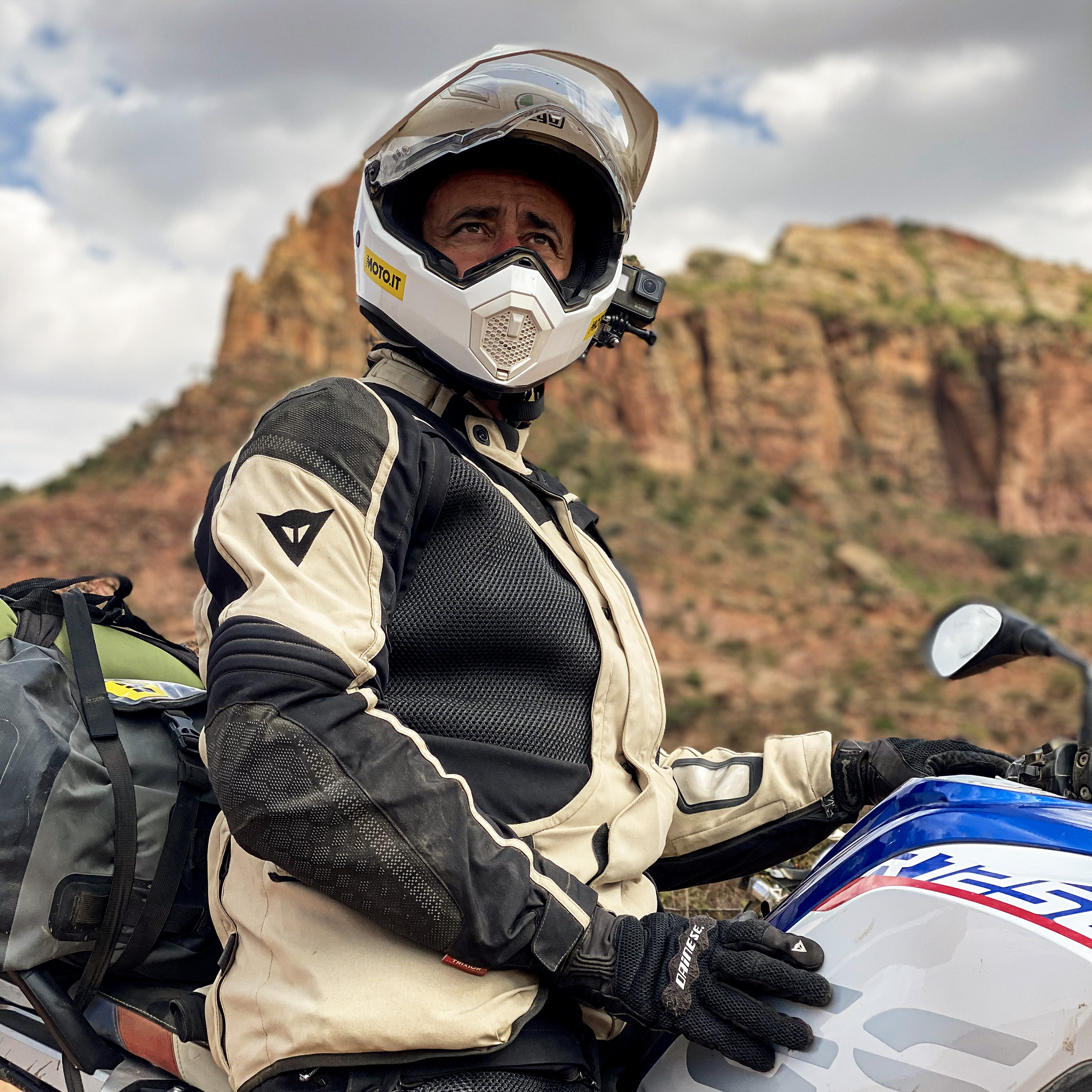
Andrea Perfetti, passionate – but perhaps it would be better to say crazy – about bikes from the beginning. I started with motocross racing in high school and never looked back. Bikes are how I make a living. I’ve been a journalist in this sector for nearly 20 years, 16 of them at Moto.it, and in the meantime I’ve been traveling, riding and dreaming bikes.
It may not change your life, but it certainly encourages you think about your own and those of other people. And it makes you love biking even more, no matter the displacement or brand. But it’s better if it can off-road, because in the land of the Horn of Africa there isn’t much asphalt and when there is it’s scary.
But the bike, never before as on this adventure of mine, has been a means, an amazing way to get in touch with a commanding, luxuriant nature and above all with an extraordinary people. It’s unique in its simplicity, and generous towards foreign visitors riding large, bizarre bikes, and rightly proud of its ancient history.
You really appreciate that a holiday in Ethiopia isn’t just one among many when you set about tackling the logistical complexities of the thing. You can hardly just have DHL ship your bike. You have to retrieve a container, prepare it for transporting the bikes and then send it to Djibouti by sea: a real odyssey that takes months.
The stress evaporates in Addis Ababa the day before departure. The bikes have arrived just in time! The great Ethiopian capital, together with all African megalopolises, requires attention when riding and a certain minimum amount of adaptation before you become familiar with the highly singular roads and traffic. We move carefully, escorted by the militiamen and with the Italian ambassador always in contact with my group by phone. After all, we are in a great metropolis which is completely unknown to us.
Any misgivings we may have had leave us as soon as we emerge from the African megalopolis. A few kilometers are all it takes to plunge us into a wild nature, amid the majestic mountains of the Amara region. The air is rarefied. We’re constantly traveling at higher than 2,000 meters. Your head and heart quickly get used to the highlands, its inhabitants and the multitude of animals that line the roads.
My big enduro bike climbs the Semien Mountains without complaint. We are over 4,000 meters and the vegetation is thinning out, but on our way we come across Orthodox Christian hermits and, towards sunset, hundreds of gelada “baboon” monkeys who seem to want to greet us as they cross the mule track and head to the valley to drink. We’ve gone from 40 degrees at the bottom of the valley to the barely 10 of the Semien Mountains. We pitch our tents and sleep at the top, at an altitude of 3,000 meters. Our journey continues towards the Tigray region. We pass the Tekezé river, where crocodiles float and the majestic Blue Nile originates. We speed towards Axum and Adwa.
There are no restaurants or stands along the streets, but makeshift shacks where you can eat lamb or bull meat accompanied by delicious flatbreads and really spicy sauces. The hospitality of the Ethiopians is a constant feature of our journey, but it’s the smiles of the many children along the way that open our hearts. They tear through the dust to greet and high-five us.
They don’t have the material possessions that seem so essential to us, but they know, with simplicity, how to offer us the most beautiful gift of all: happiness and the desire to be in our company. It’s a profound lesson for each one of us, children of an individualistic society enslaved to the inessential. We are already thinking about when to come back, with the motorcycle luggage full of notebooks and pencils for these wonderful kids.
Ethiopia, a journey suggesting exploration. Bikes are ideal for discovering these mountains. They break down every barrier between us, the environment and the people. Two weeks with little asphalt, no organized tours and plenty of ability to adapt to sudden changes in circumstances. Extreme poverty, skyrocketing social tensions (now there’s a civil war there), but plenty of welcome and eyes full of warmth.
Gear plays a leading role. On the bike you have to protect yourself, but you always need to be comfortable. It has to provide great ventilation to withstand the scorching heat of the plain with large, functional perforated areas. Otherwise, 10 hours a day on a motorcycle become a medieval torture. But it also needs to insulate you against the early-morning cold, and it has to guarantee safety. Off-road, you fall – it happens – but health care in Ethiopia can become a very, very big problem. Better safe than sorry. That’s why the Dainese D-Explorer 2 suit was ideal, with protection studied for MotoGP™ and extensive air vents that can be opened as needed.
After almost 3,000 kilometers of dust, stones and sweat, the D-Explorer 2 has turned from simply a jacket into a faithful companion on an adventure that will always remain in my heart, and on my skin like an imperceptible tattoo. I open the closet and there it is, dusty. I close my eyes and I'm already in Africa.
A lot of attention was paid to the choice of helmet. The AX9 is comfortable, ventilated and the visor is crucial when riding at sunset. The tire repair kit is always on the bike – but I didn’t need it – as well as the tent tied to the back. It’s a must, because in Ethiopia you know when you’re leaving, but not when you’ll find somewhere to sleep.